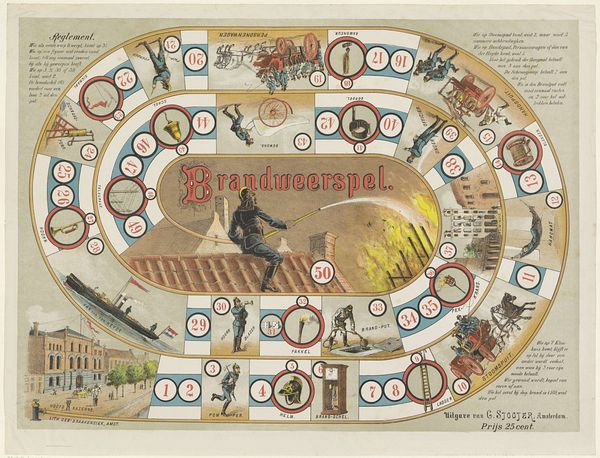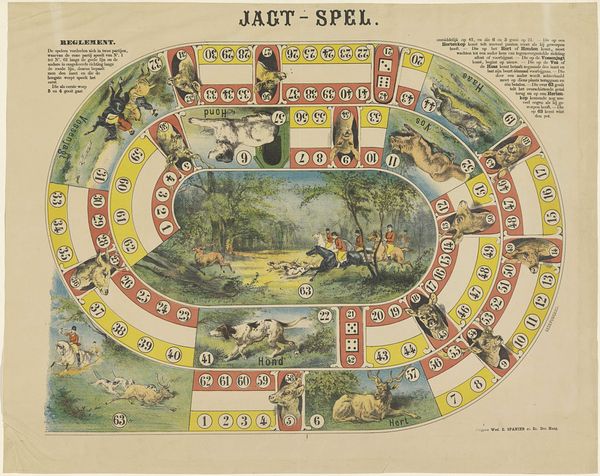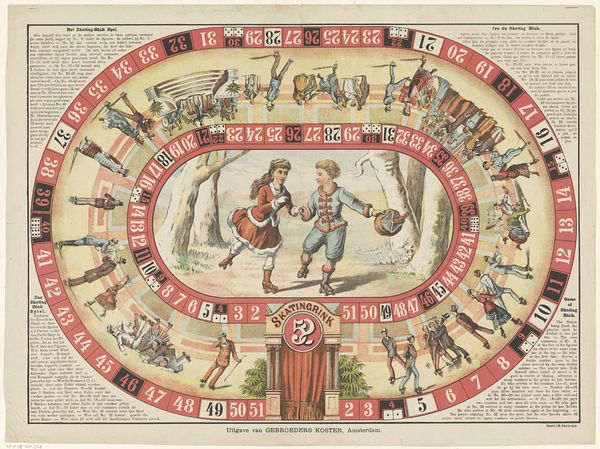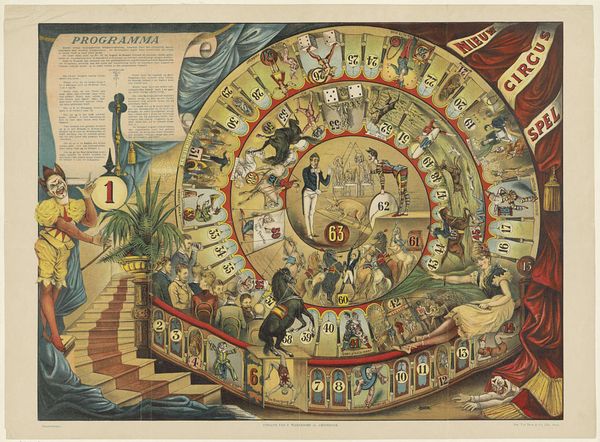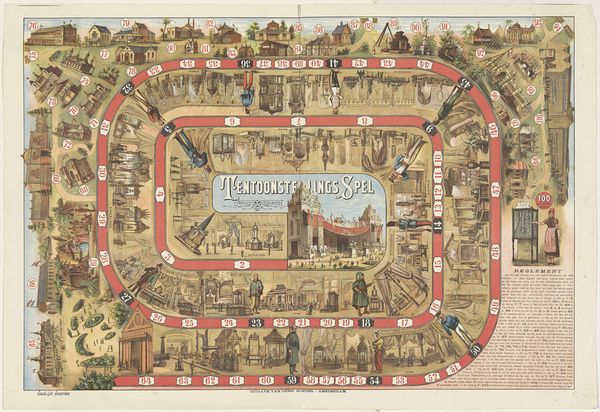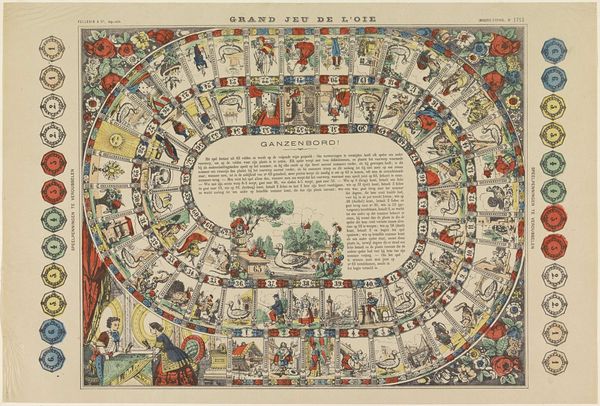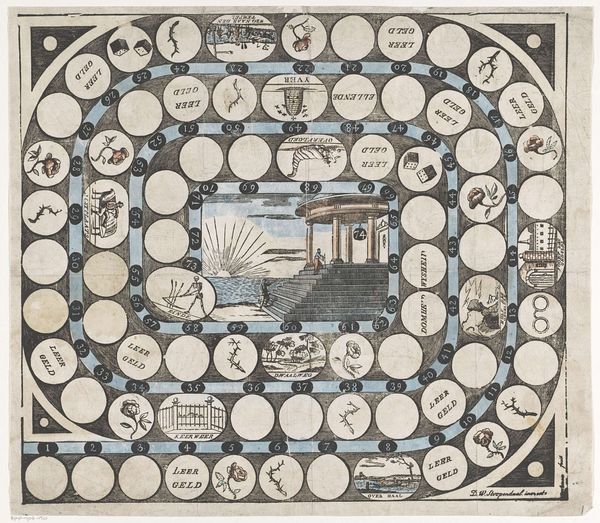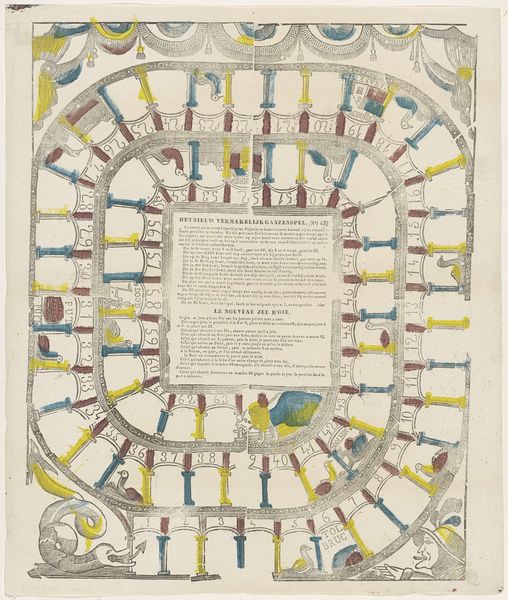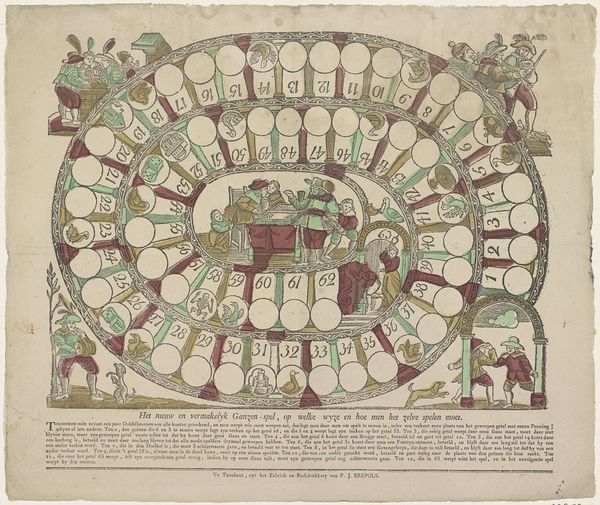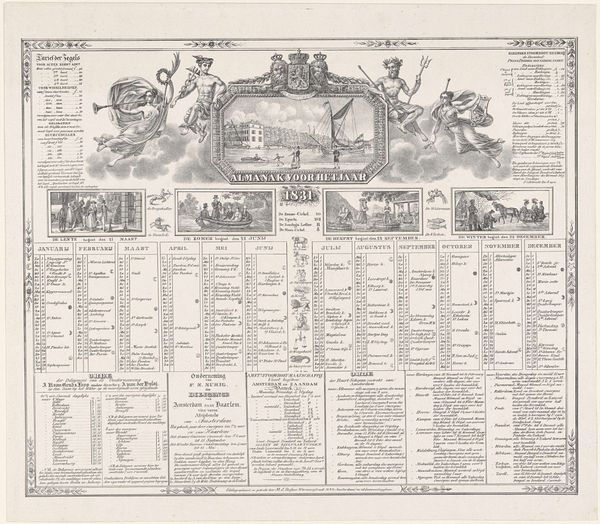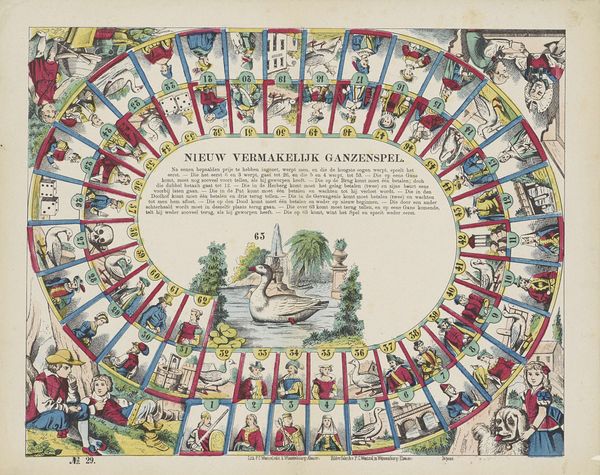
graphic-art, lithograph, print, poster
#
graphic-art
#
lithograph
# print
#
cityscape
#
genre-painting
#
academic-art
#
poster
Dimensions: height 470 mm, width 608 mm
Copyright: Rijks Museum: Open Domain
Curator: Let's take a look at this vibrant lithograph, "Tramway-spel", likely printed between 1877 and 1891 by Harms & Co. Ellerman. It's an interesting game board, full of narrative scenes, reflecting daily life. What strikes you first? Editor: It's the blend of leisure and labor. There's something both charming and a bit unsettling about framing daily transit as a game, given the very real social dynamics at play. It has that strange fin-de-siècle innocence. Curator: Exactly! The tramway, depicted so prominently in the center and encircling the board, was a novel form of urban transport at the time. The repeating horses point to this theme. Their heads show speed, strength, almost a pantheon of equine power. I also noticed a number of passengers looking forward inside the tram. What does that convey? Editor: To me, the horses in varying states evoke both the promise and the price of progress. They drive the tramway but also represent animal labor, reflecting the tension between industrial advancement and exploitation of labor - both human and animal. Even those blank, box-like spots along the game circuit invite questions of "chance". Curator: I can see that. What I found especially fascinating is the carefully placed images of conductors and what looks to be passengers inside and outside the carriage. There are very different energies associated with both and an almost ritualized placement that must resonate with our perception of travel and commerce in this period. There are several horse-drawn carriage variations along the circular playing spaces. What symbolic values might they be pointing towards? Editor: Maybe class. The horse-drawn carriage as an obvious visual signifier of the bourgeois experience, distinct from public transit but tied to it in the streetscape and the labor systems which sustained the upper class lifestyle. I'm seeing this in tension with the grid of numbered stops and images along the route. This structure imposes order. Curator: Absolutely, these subtle reminders highlight how transport intersects with social hierarchy. Even the "rules" for playing—however rudimentary—suggested a symbolic navigation of a community in transition. Do you agree that images are used to point to psychological patterns, to a collective fascination? Editor: I completely agree. Visual games such as "Tramway-spel" both mirror and manipulate society’s underlying belief systems. I see transit, like the art itself, becoming another space for the negotiations and the expressions of both cultural hope and latent social critique.
Comments
No comments
Be the first to comment and join the conversation on the ultimate creative platform.
